Hope is beneath all instinct, or desire; that is, all life. Our bodies or our selves keep on living because we think that good or pleasure can come from our living. Life is a belief in life, or if you wish, a faith in life; and, no matter how sentimental it may sound, hope is biology, biology is hope. To desire pleasure means that we hope we can get it.
To desire to live means that we hope our life will be all right, pleasurable, meaningful, proper. Beneath all drives, is a belief in them, that is, hope. The circulation of the blood and the heartbeat are the physiological representations of inarticulate hope.
It is well, though, to look at the word in a more specific, ordinary way. —Sam hopes he will get along well with Annabel. This means Sam hopes he will get pleasure from Annabel. In so far as he hopes, Sam has pleasure already. The more he hopes, the more pleasure he has. But the pleasure is about possible pleasure. The thought of possible pleasure is, then, pleasing now.
However, since Sam hopes, he also fears. He remembers certain things about Annabel, and he has been told some. He can’t put these altogether out of his mind. Besides, he doesn’t know just how good Annabel would be for him. So we find that the hope has fear with it, which means that the hope, as pleasure, has along with it fear, as pain. And we find further that the hope and fear have along with them knowing and not knowing. As the state of knowing and not knowing fares, so does the hope, and so does the fear.
All feelings have this quadruple interaction in motion, of pleasure and pain, knowing and not knowing.

